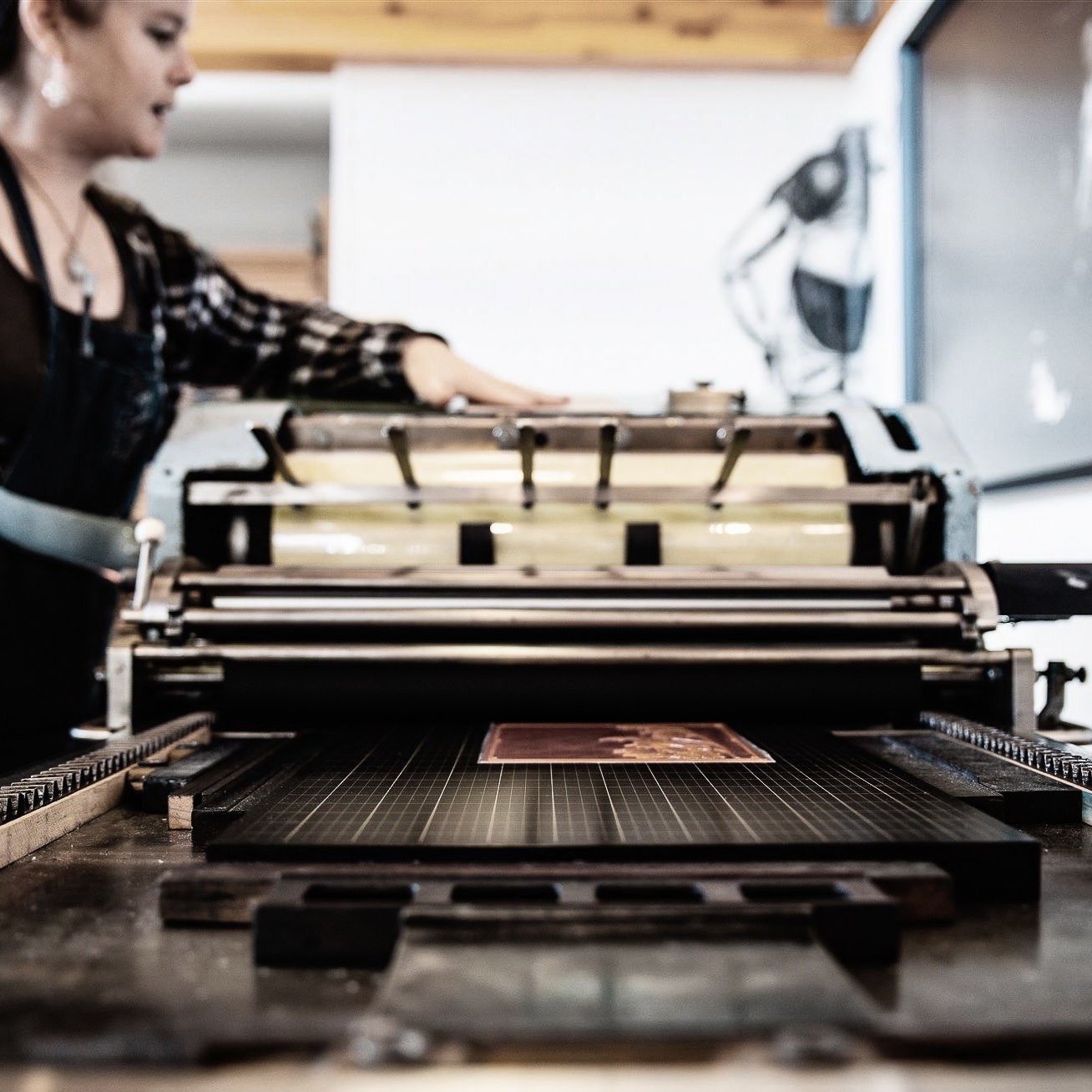Inspired By Heritage
We live and breathe letterpress printing at The Armarie Room. But many of you might be wondering, what exactly is letterpress? Letterpress has defined much of modern printing history, with a tradition spanning several centuries. With this in mind, the best way to gain an understanding of this art form is to start at the beginning……
Type cases store metal type used for letterpress printing. A single case holds one font of type. A set of cases is stored in a type cabinet.
Each type case is divided into compartments to keep pieces of type organised.
The origins of letterpress
Letterpress printing is a type of relief printing, where an inked surface is pressed onto paper. It originated in China around A.D. 1040, where the development of movable type replaced the previous method of carving entire pages of text out of one wooden block! Movable type meant that individually carved characters could now be rearranged independently and used numerous times.
The metal frame used for locking up type and holding it in place is called a chase. Chases come in different sizes depending on the press they’re used with.
Type is held in the chase using furniture and quoins. Furniture are wooden blocks that fill the spaces around the type. Quoins are used to lock the form tightly in place.
Several centuries later in the 1450s, Johannes Gutenberg introduced movable type and letterpress printing to the West. In the wake of handwritten manuscripts and woodblock printing, Gutenberg introduced unprecedented developments, including casting type from hot metal; using capital letters, lowercase letters and punctuation; developing the printing press and designing a robust oil-based ink. These new progressions in printing technology revolutionised the Western world. It bought the printed word to the masses and served to spread ideas in a way that hadn’t been possible before. It changed how Western civilisation regarded printed information, setting in motion the growth of literacy and knowledge. Letterpress remained the dominant printing method for almost 500 years and its importance to our culture continues to this day. For example, upper case, lower case and many of the terms we use to describe typography all come from letterpress history.
A composing stick is a handheld tool that’s used for setting metal type.
This Chandler and Price platen press is operated by a foot-powered treadle.
THE DEVELOPMENT OF FINE PRESS PRINTING.
During the mid-20th century, letterpress printing gradually began to be replaced with new techniques and processes. Offset and digital printing became the most common of the commercial printing methods. It seemed that letterpress printing might slowly fade into our cultural background. But the Arts and Crafts movement in the 20th century saw a counter culture to this industrialisation. Independent fine press studios became established and sought to recapture the beauty of traditional printmaking. Printers, artists and craftspeople not only maintained the artistry of this craft but continued to grow the aesthetic into the exceptional quality we see today.
Letters that have been locked into place are called a printing form. This form has been created from wooden type.
Letterpress and bookbinding tools are treasured items for those who work at a fine print press.
LETTERPRESS NOW
In a world gone digital, a letterpress printed piece cuts through the noise. It is tangible, tactile, and carries authentic meaning. At The Armarie Room, we have patiently learnt this craft from retired master printers, restored a family of vintage printing presses, and are proud to be one of the few remaining fine press printeries still operating in New Zealand.
Letterpress printing on a precision, cylinder proof press at The Armarie Room. This kind of press is very rare in NZ and has the ability to produce high-quality, modern letterpress work. The large press bed means its production capabilities range from small wedding invitations through to large, fine art prints.
Printing without ink is called a ‘blind impression’ and can be simply stunning when pressed onto thick, cotton paper.










